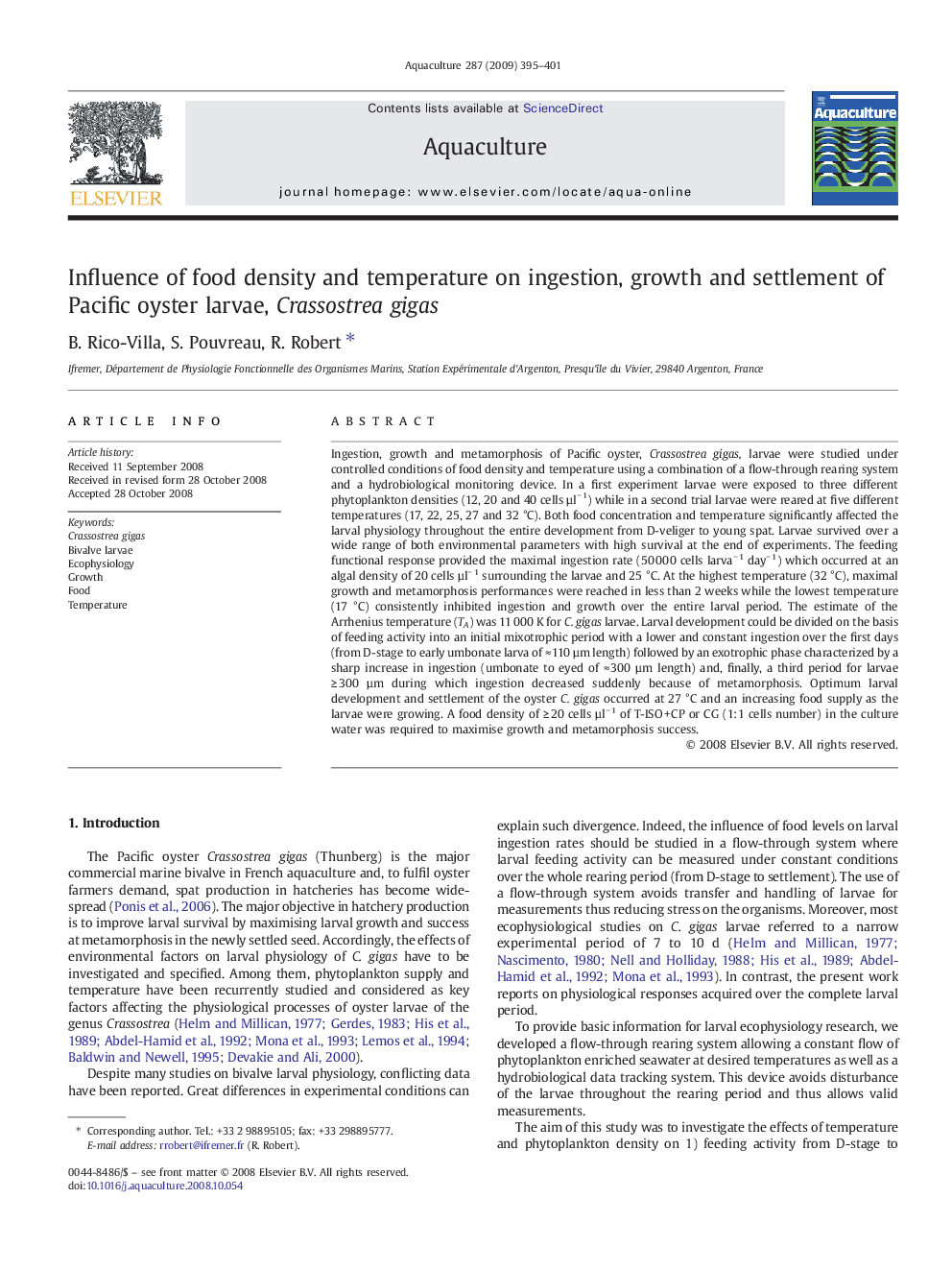| کد مقاله | کد نشریه | سال انتشار | مقاله انگلیسی | نسخه تمام متن |
|---|---|---|---|---|
| 2424413 | 1552952 | 2009 | 7 صفحه PDF | دانلود رایگان |

Ingestion, growth and metamorphosis of Pacific oyster, Crassostrea gigas, larvae were studied under controlled conditions of food density and temperature using a combination of a flow-through rearing system and a hydrobiological monitoring device. In a first experiment larvae were exposed to three different phytoplankton densities (12, 20 and 40 cells µl− 1) while in a second trial larvae were reared at five different temperatures (17, 22, 25, 27 and 32 °C). Both food concentration and temperature significantly affected the larval physiology throughout the entire development from D-veliger to young spat. Larvae survived over a wide range of both environmental parameters with high survival at the end of experiments. The feeding functional response provided the maximal ingestion rate (50 000 cells larva− 1 day− 1) which occurred at an algal density of 20 cells µl− 1 surrounding the larvae and 25 °C. At the highest temperature (32 °C), maximal growth and metamorphosis performances were reached in less than 2 weeks while the lowest temperature (17 °C) consistently inhibited ingestion and growth over the entire larval period. The estimate of the Arrhenius temperature (TA) was 11 000 K for C. gigas larvae. Larval development could be divided on the basis of feeding activity into an initial mixotrophic period with a lower and constant ingestion over the first days (from D-stage to early umbonate larva of ≈ 110 µm length) followed by an exotrophic phase characterized by a sharp increase in ingestion (umbonate to eyed of ≈ 300 µm length) and, finally, a third period for larvae ≥ 300 µm during which ingestion decreased suddenly because of metamorphosis. Optimum larval development and settlement of the oyster C. gigas occurred at 27 °C and an increasing food supply as the larvae were growing. A food density of ≥ 20 cells µl− 1 of T-ISO + CP or CG (1:1 cells number) in the culture water was required to maximise growth and metamorphosis success.
Journal: Aquaculture - Volume 287, Issues 3–4, 18 February 2009, Pages 395–401